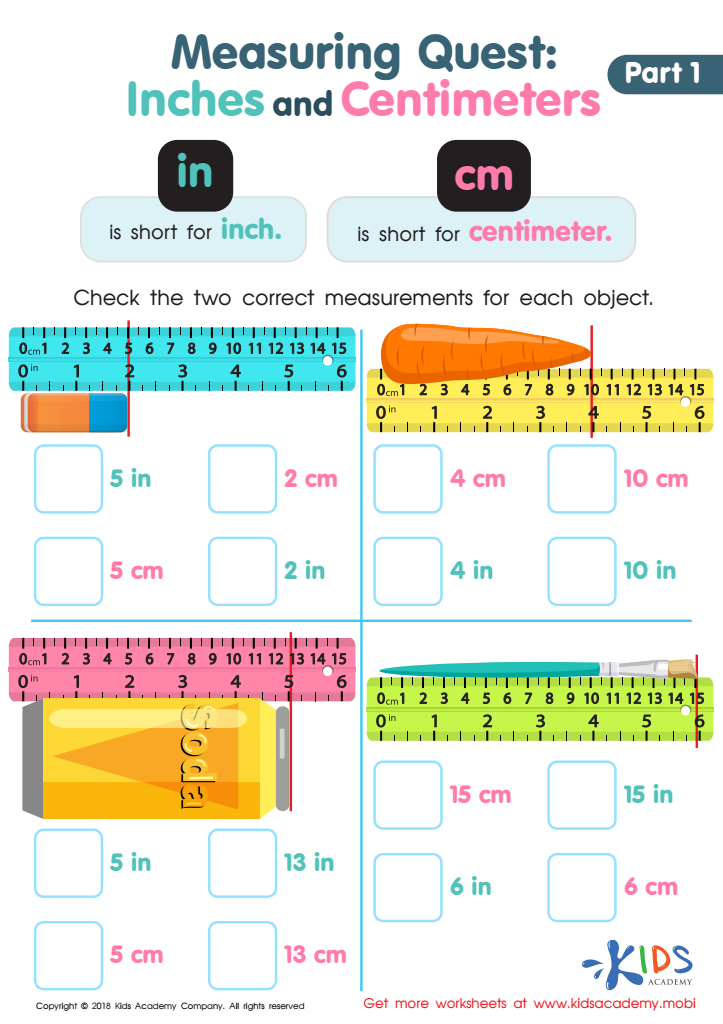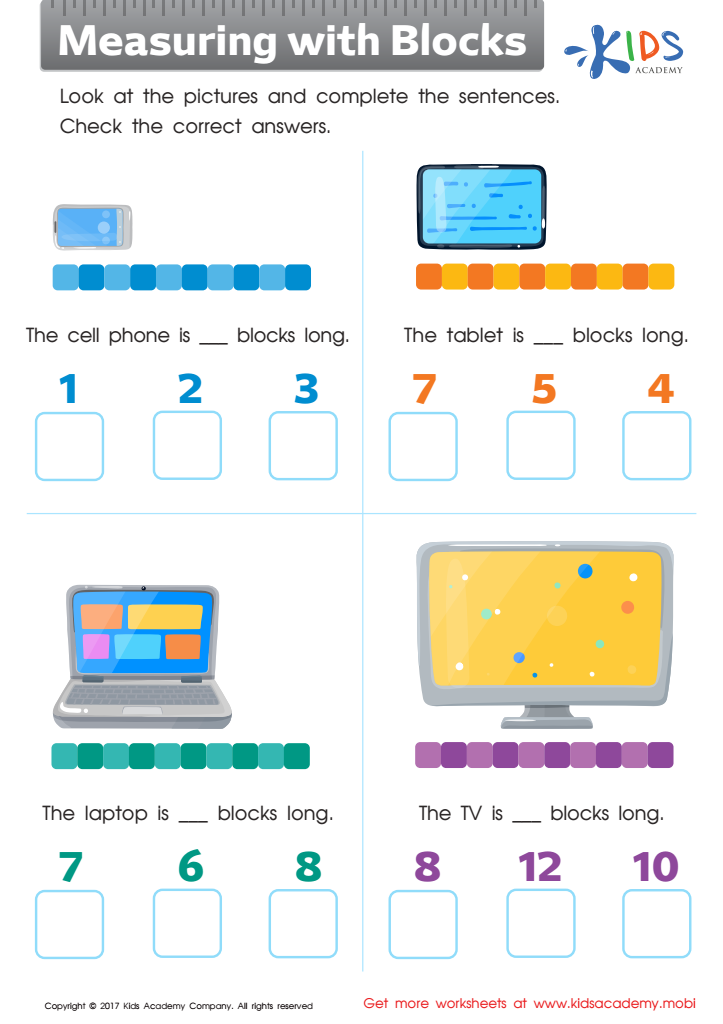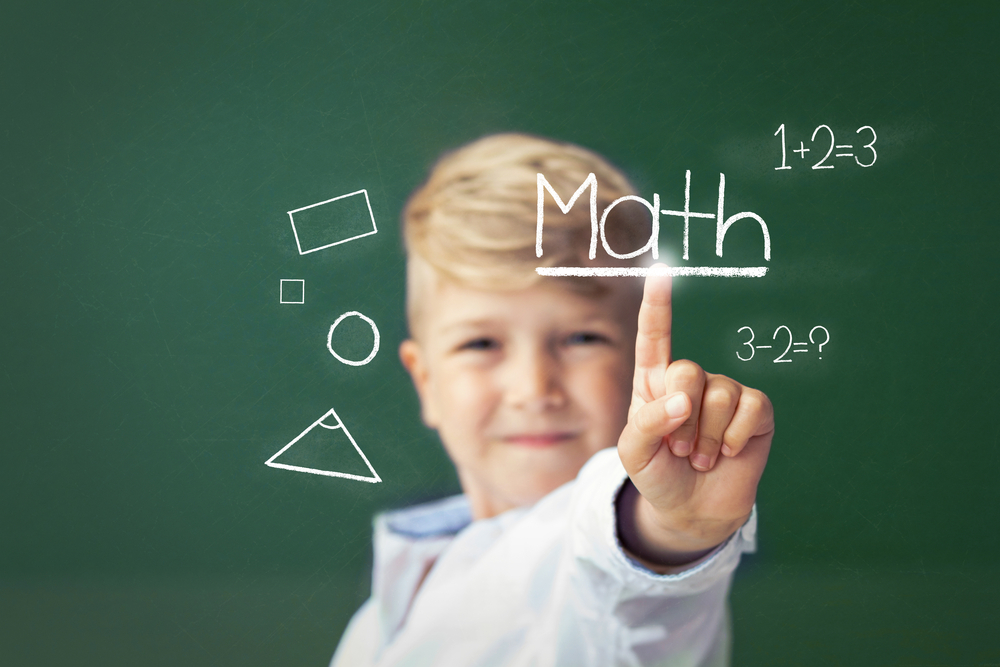Comparing lengths Easy Measurement Worksheets for Ages 4-7
5 filtered results
-
From - To
Introduce young learners to the fascinating world of measurement with our "Comparing Lengths Easy Measurement Worksheets for Ages 4-7". Designed to develop critical thinking and observational skills, these fun and engaging worksheets help children compare different lengths effortlessly. Perfect for classroom and home use, each activity is tailored to suit the learning pace of kids aged 4-7. These visually appealing worksheets feature colorful images and simple tasks that make learning enjoyable. Enhance your child's understanding of sizes and measurements, laying a solid foundation for future math skills, with our easy-to-use, printable resources. Ready, set, measure!


Measuring Quest: Inches and Centimeters Worksheet


Length Comparison Quest Worksheet


Measuring Reptiles Worksheet


Measuring with Blocks Worksheet


Let's Measure Animals! Worksheet
Comparing lengths is a fundamental aspect of early measurement education for children ages 4-7, a stage during which they are particularly receptive to foundational math concepts. This learning activity not only cultivates essential cognitive skills but also fosters a sense of curiosity and organization in young learners. By engaging in length comparison, children enhance their observational skills and attention to detail, learning to discern differences and similarities between objects.
Introducing children to these concepts at an early age helps them develop spatial awareness and quantitative reasoning, which are critical components of later mathematical learning. It also lays the groundwork for more complex concepts such as geometry, algebra, and data analysis. When early learners understand measurement and comparison, they are better equipped to grasp the significance of numbers and the relationships between them.
Moreover, comparing lengths enriches children's vocabulary, introducing terms such as longer, shorter, taller, and measuring units. This language development is an important aspect of overall educational growth. Furthermore, hands-on measuring activities can boost fine motor skills and promote social interaction as children work together, share resources, and discuss their findings. Ultimately, emphasizing length comparison in early education helps to build a robust foundation for future success across academic subjects and daily life challenges.
 Assign to My Students
Assign to My Students
















